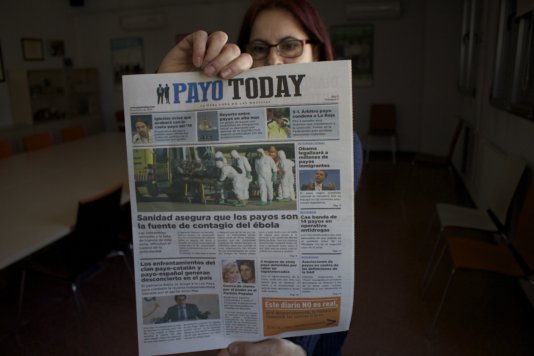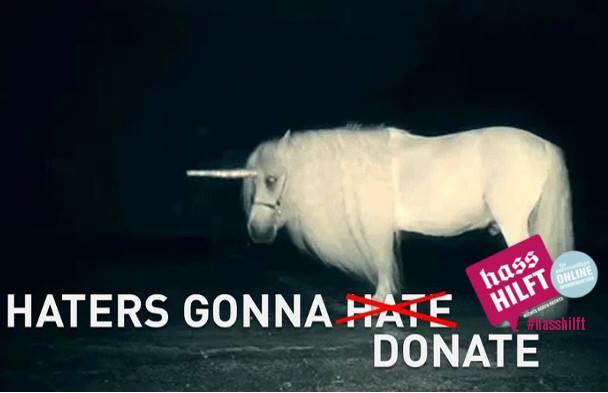- About
- Topics
- Picks
- Audio
- Story
- In-Depth
- Opinion
- News
- Donate
-
Signup for our newsletterOur Editors' Best Picks.Send
Read, Debate: Engage.
| March 24, 2015 | |
|---|---|
| topic: | Discrimination |
| located: | Spain |
| by: | Pablo Pérez Álvarez |
But, this ethnic minority argues, when the one who steals or is involved in another unpleasant incident is not gypsy (a “payo” in the language of Spanish Roms) the information doesn’t specify his or her ethnic origin. They claim that by underlining the race of the protagonist in crime pieces when they are gypsies, media are highlighting the undesired stereotypes of this community.
In addition, these news items are coloured with negative words, like “clan” or “patriarch”, which are not related to the gypsy culture, but are often ascribed to it by the rest of the population.
“For certain collectivities it’s very harmful, the social image spread by the media, and it has a decisive influence in the building of stereotypes and in the perpetuation of prejudices,” says Pilar Calón, from the Gypsy Secretariate Foundation, and NGO which fights for equality and the social inclusion of Romani people.
And the stereotype that Spanish society has about gypsies, as in many countries in Europe, is that they are people who don’t want to work, with no education, nor are they interested in following the rules for social coexistence, usually devoted to street selling or to theft.
That’s why the Foundation has launched an original campaign to expose this situation: the “Payo Today”, a newspaper edition with actual news about current events where it is also pointed out the race of their protagonists, only this time they are all payos: “Payos are the source of ebola outbreak”, “Payo referee condemns the Spanish team”, “War among patriarchs in the Popular Party”.
This campaign, aimed to raise journalists’ consciousness so they avoid stigmatizing the gypsy community in their work, also includes a website and a TV news report (broadcast on the web) in the same direction: a gypsy journalist reports authentic facts as the judiciary process against 43 payo politicos charged with corruption or that a payo clan beat another one in the fight for power in a political party.
“We printed 4,000 copies of the newspaper and sent them to the paper's headquarters. But it has been a campaign designed mainly for the social networks, like Facebook and Twitter. Then we developed an online campaign with a micro website and the video report. We’ve had an awesome response. I think that the message has been perfectly understood, it has generated a huge sympathy and has caught the journalists' attention as we wanted,” says Calón.
The Gypsy Secretariate Foundation, which in the past year has made guides to help journalists approach the news related with the Romani community without prejudices, acknowledges that in the past years Spanish media has had an important improvement in this field, but they say there are still some bad practices that create obstacles standing in the way of Gypsies' social inclusion.
“There’s an interest in journalists to learn to do it right. But, in spite of this, the ‘Payo Today’ spirit is still very in use,” says Calón. “When someone commits a crime it is one precise person who does it, but when this is extrapolated by the papers to the whole community, the result is the criminalization of an ethnic group and that deprives their members of basic rights, such as the right to a house, the right to a job, the right to education…”.
Every year this organization reports dozens of racial discrimination cases against the gypsy community: people who are fired from a job when management realises he or she is gypsy, others who are refused credit or the ability to rent an apartment.
“The statistics still show that gypsy community is the most excluded among the excluded ones, the most rejected,” says Calón.
The Rom community has been discriminated against in Spanish laws since the 16th century. In the Francoist Spain (1939-1975) their language was forbidden as it was considered a “crook slang” and gypsies were chased by police in the name of a “Law Against Tramps and Wrongdoers”. Because of that, they had to hide and didn’t take their children to school. This is still a burden to their social inclusion.
With the 1978 democratic Constitution that established equality among all the Spaniards, “the progress reached by the gypsy community has been impressive,” celebrates Calón. They are no longer living mostly in slums or in neighbourhoods segregated from the rest of the population. “There are many of us who have a completely normal life: with a regular home, a job, with their children integrated in their schools”.
But many stereotypes survive in the social consciousness of the Spaniards and Romani are still a marginalised community. According to figures of the Gypsy Secretariate Foundation, 42% of them are unemployed (when the Spanish rate of unemployment is 25%) and a quarter of the families depend on informal jobs or on subsistence economy.
An example of the gypsies' stereotypes is in the last edition of the Real Academy of Spanish Language dictionary, a reference book for the whole Spanish-speaking world. One of the meanings it includes for the word “gypsy” is “trapacero” (swindler), that’s to say, “a person who, with tricks, deceits and lies tries to cheat someone”.
By copying the embed code below, you agree to adhere to our republishing guidelines.

